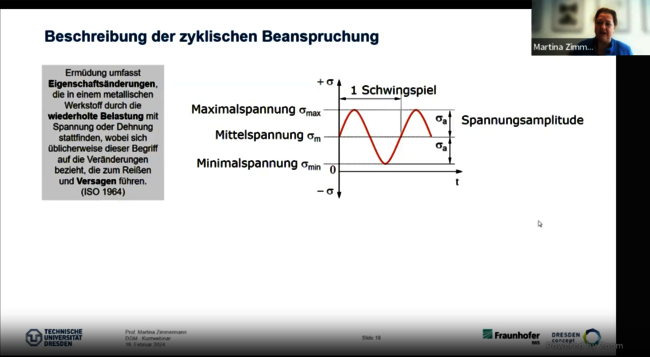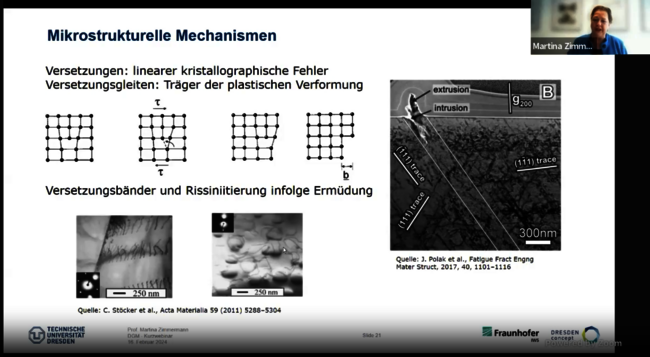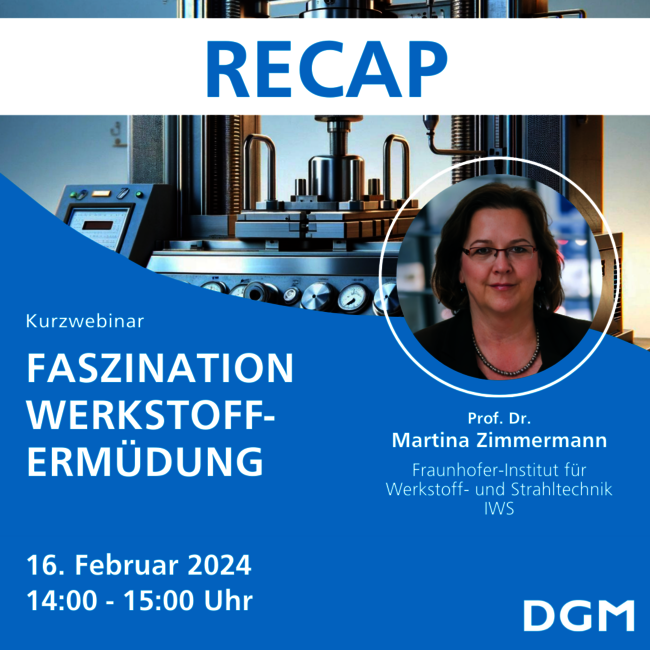


Whether in aviation, wind turbines, cable cars, or gas pipelines, material fatigue is omnipresent and highly relevant. The particular challenge lies in its invisibility to the naked eye, potentially resulting in sudden material failure. Hence, understanding material fatigue is essential to prevent such incidents.
Invisible to the Naked Eye
Unlike externally visible changes like plastic deformations, fatigue phenomena occur on a microstructural level, making their observation equally challenging and fascinating. Prof. Zimmermann addressed dislocation movements leading to cracks in materials, changes hardly detectable by the naked eye.
Multidimensional Influencing Factors
A significant motivator for studying fatigue is predicting component resilience and lifespan. In addition to Prof. Dr. Zimmermann's fascination with the topic, the presentation highlighted one thing: material fatigue is multidimensional. Fatigue operates under a complex interplay of influences, where understanding the material's structure, as well as macroscopic and microscopic elements and the operational stress, is crucial. The interaction of various disciplines, from material production to testing to material physics, adds to the allure of researching fatigue phenomena.
Description of Fatigue and Impressive Research Examples
As interdisciplinary as the influencing factors on components are the possibilities for their description. For Prof. Dr. Zimmermann, it is essential to merge materials science with a construction-driven perspective and highlight their connections. The webinar focused on the Wöhler curve as a descriptor of fatigue phenomena. However, as it lacks predictive power regarding crack growth, attention was widened to other curves, such as the fatigue crack growth curve. When it comes to tuning materials for applications, individual adjustments are highly sensitive. This connection is impressively demonstrated by the complex fatigue behavior of the nickel-based alloy Nimonic 80A.
A Bouquet of Material Fatigue
Prof. Dr. Zimmermann metaphorically described her presentation as a bouquet, illustrating the fascination and relevance of the material fatigue complex with its numerous sub-disciplines.
Those curious about the topic can deepen their knowledge in the "Ermüdungsverhalten metallischer Werkstoffe" training, also led by Prof. Dr. Zimmermann, taking place from 15 to 17 April 2024 in Dresden. We look forward to welcoming you there!
![[Translate to English:]](/fileadmin/_processed_/f/0/csm_logodgm-4_b2722eeace.png)
![[Translate to English:]](/fileadmin/user_upload/logodgm-4.png)